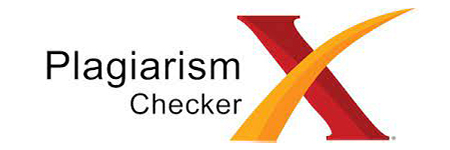A Holistic Approach to Enhancing the Quality of Education for Inclusive Students in Elementary Schools
DOI:
https://doi.org/10.70716/jess.v1i2.107Keywords:
Holistic Approach, Elementary School, Special Needs StudentsAbstract
Inclusive education in elementary schools is an important effort to ensure that every student, including those with special needs, gets equal educational rights. This article examines a holistic approach in improving the quality of education for inclusive students, with an emphasis on collaboration between educators, parents and the community. A holistic approach includes various aspects, such as curriculum adaptation, development of inclusion-friendly teaching methods, teacher training, and creating a learning environment that supports diversity. This research uses qualitative methods with literature analysis and case studies in several inclusive elementary schools. The study results show that a holistic approach can improve learning motivation, student engagement, and their academic outcomes. Thus, implementing this approach is recommended as an effective strategy to support sustainable and quality inclusive education at the elementary school level.
Downloads
References
Ainscow, M. (2020). Promoting inclusion and equity in education: Lessons from international experiences. Nordic Journal of Studies in Educational Policy, 6(1), 7–16. https://doi.org/10.1080/20020317.2020.1729587
Alquraini, T., & Gut, D. (2012). Critical components of successful inclusion of students with severe disabilities: Literature review. International Journal of Special Education, 27(1), 42–59.
Avramidis, E., & Norwich, B. (2002). Teachers' attitudes towards integration/inclusion: A review of the literature. European Journal of Special Needs Education, 17(2), 129-147.
Booth, T., & Ainscow, M. (2011). The Index for Inclusion: Developing Learning and Participation in Schools. Centre for Studies on Inclusive Education (CSIE).
Braun, V., & Clarke, V. (2006). Using thematic analysis in psychology. Qualitative Research in Psychology, 3(2), 77–101. https://doi.org/10.1191/1478088706qp063oa
Creswell, J. W., & Poth, C. N. (2018). Qualitative inquiry and research design: Choosing among five approaches (4th ed.). SAGE Publications.
Epstein, J. L. (2001). School, Family, and Community Partnerships: Preparing Educators and Improving Schools. Boulder, CO: Westview Press.
European Agency for Special Needs and Inclusive Education. (2020). Key principles of inclusive education: Recommendations for policy makers. Odense, Denmark.
Flick, U. (2018). An introduction to qualitative research (6th ed.). SAGE Publications.
Florian, L. (2014). Reimagining special education: Why new approaches are needed. Support for Learning, 29(3), 186-190.
Florian, L. (2014). What counts as evidence of inclusive education? European Journal of Special Needs Education, 29(3), 286–294. https://doi.org/10.1080/08856257.2014.933551
Florian, L., & Black-Hawkins, K. (2011). Exploring inclusive pedagogy. British Educational Research Journal, 37(5), 813-828.
Forlin, C., Sharma, U., & Loreman, T. (2017). Predictors of improved teaching efficacy following basic training for inclusion in Hong Kong. International Journal of Inclusive Education, 21(10), 1164–1176.
Forlin, C., Sharma, U., & Loreman, T. (2017). Teacher education for inclusion: Changing paradigms and innovative approaches. Routledge.
Hornby, G., & Lafaele, R. (2011). Barriers to parental involvement in education: An explanatory model. Educational Review, 63(1), 37-52.
Kvale, S., & Brinkmann, S. (2015). InterViews: Learning the craft of qualitative research interviewing (3rd ed.). SAGE Publications.
Lincoln, Y. S., & Guba, E. G. (1985). Naturalistic inquiry. SAGE Publications.
Lindsay, G. (2007). Educational psychology and the effectiveness of inclusive education/mainstreaming. British Journal of Educational Psychology, 77(1), 1-24.
Loreman, T., Deppeler, J., & Harvey, D. (2014). Inclusive Education: Supporting Diversity in the Classroom. Abingdon: Routledge.
Merriam, S. B., & Tisdell, E. J. (2016). Qualitative research: A guide to design and implementation (4th ed.). Jossey-Bass.
Nguyet, D., & Ha, T. T. (2020). Inclusive education for children with disabilities in Vietnam: The current situation and solutions. International Journal of Disability, Development and Education, 67(1), 1–13. https://doi.org/10.1080/1034912X.2019.1628330
Okolo, C. M., & Diedrich, J. (2014). Twenty-five years later: How is technology used in the education of students with disabilities? Journal of Special Education Technology, 29(1), 1-20.
Palinkas, L. A., Horwitz, S. M., Green, C. A., Wisdom, J. P., Duan, N., & Hoagwood, K. (2015). Purposeful sampling for qualitative data collection and analysis in mixed method implementation research. Administration and Policy in Mental Health and Mental Health Services Research, 42(5), 533–544. https://doi.org/10.1007/s10488-013-0528-y
Sharma, U., & Sokal, L. (2016). Can teachers’ self-reported efficacy, concerns, and attitudes predict their actual inclusive classroom practices? Australian Journal of Teacher Education, 41(9), 1–20. https://doi.org/10.14221/ajte.2016v41n9.1
Sharma, U., Forlin, C., & Loreman, T. (2018). Impact of training on pre-service teachers’ attitudes and concerns about inclusive education. Asia-Pacific Journal of Teacher Education, 46(2), 118–131. https://doi.org/10.1080/1359866X.2017.1359827
Sharma, U., Loreman, T., & Forlin, C. (2018). Predicting pre-service teachers’ attitudes and intentions to teach in inclusive classrooms: Testing the theory of planned behaviour. International Journal of Inclusive Education, 22(8), 918-929.
Slee, R. (2011). The Irregular School: Exclusion, Schooling and Inclusive Education. Routledge.
Symeonidou, S. (2018). Rights of children with disabilities: An insight into policies and practices on inclusive education. International Journal of Inclusive Education, 22(3), 287–300. https://doi.org/10.1080/13603116.2017.1370734
Tomlinson, C. A. (2001). How to Differentiate Instruction in Mixed-Ability Classrooms. Alexandria, VA: ASCD.
Tran, N. (2021). Parent participation in inclusive education for children with disabilities in Southeast Asia. Journal of International Special Needs Education, 24(2), 89–100. https://doi.org/10.9782/20-00022
UNICEF. (2019). Inclusive Education: Including Children with Disabilities in Quality Learning. UNICEF Publications.
Downloads
Published
How to Cite
Issue
Section
License
Copyright (c) 2025 Muhammad Syamsul Rijal

This work is licensed under a Creative Commons Attribution-ShareAlike 4.0 International License.











